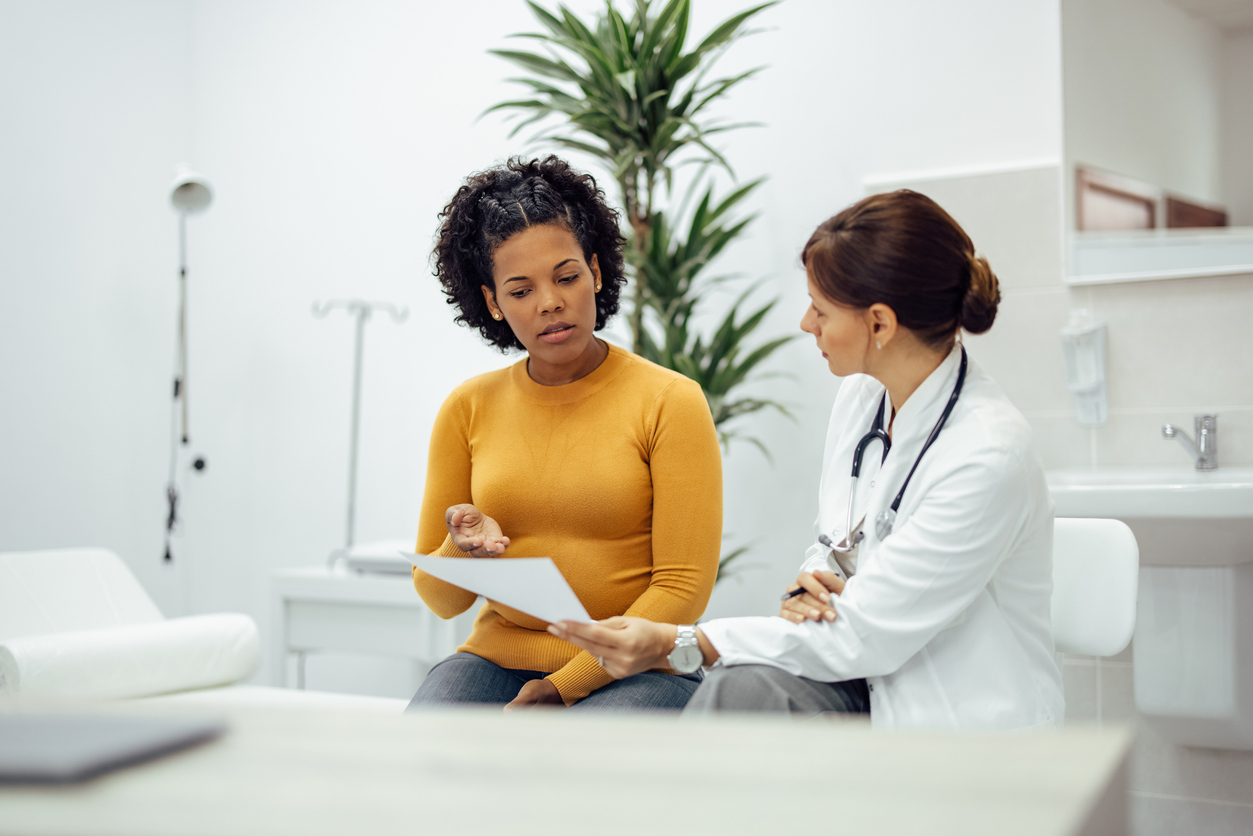Many women are familiar with or have heard of endometriosis and the painful, heavy periods and pelvic discomfort that may come with it. Adenomyosis is a disease that causes similar symptoms, which is why it can be misdiagnosed as other conditions, such as fibroids or endometriosis. It is, however, its own condition.
With the help of Dr. Jessica Bauer of IVF MD, in this article we will walk you through what adenomyosis is, the signs and symptoms to look out for, how it differs from another, more common gynecological condition, and what options there are for women who receive the diagnosis.
What is adenomyosis?
“Adenomyosis is a benign condition defined as the presence of endometrial glands and stroma seen within the myometrium (or muscle tissue) of the uterus,” explains Dr. Bauer.
Why is this a problem? The endometrium should be distinct from the nearby muscle tissue of the uterus. Instead, adenomyosis causes the endometrial tissue to grow into the uterus’s muscular wall. According to Dr. Bauer, adenomyosis can be throughout the uterus or in one specific area.
What causes adenomyosis?
As of now, medical experts are not exactly sure what causes adenomyosis. There are, however, common risk factors linked to the condition. For instance, most women with adenomyosis are in their later childbearing years, typically falling between the ages of 35 and 50.
Childbirth, itself, can also be a risk factor. While more research needs to be done to confirm this, specialists suspect the endometrial tissue that grows inside the uterine wall could have gotten there in the first place when an embryo implants in the uterine wall.
There are also some studies that suggest previous surgeries are potential risk factors for women. If you have undergone any uterine surgeries, such as cesarean section or dilation and curettage (D&C), your risk of adenomyosis could be more likely.
What are the common symptoms of adenomyosis?
Because the abnormal growth in the uterine muscular wall causes the uterus to enlarge, adenomyosis may cause heavy menstrual bleeding and painful periods.
Still, you might find yourself wondering how adenomyosis differs from the more well-known condition, endometriosis. According to Dr. Bauer, Adenomyosis and endometriosis can often occur together in the same body, which does create a bit of a challenge when it comes to diagnoses.
The greatest difference between the two comes down to location.
“Endometriosis is the presence of endometrial glands and stroma outside of the uterus — in the pelvis, ovary, fallopian tube, etc. — while adenomyosis refers to endometrial cells within the muscle tissue of the uterus,” clarifies Dr. Bauer.
You received an adenomyosis diagnosis. What’s next?
“The treatment of adenomyosis is especially challenging for women that are TTC or women who are not completed with childbearing. This is because the only definitive treatment is a hysterectomy, which is the removal of the uterus,” explains Dr. Bauer.
As previously mentioned, the adenomyosis itself can be either diffuse, throughout the whole uterus, or localized to one specific area (focal). If yours is focal, your physician might be able to surgically remove or resect that one specific area.
While it does not definitely cure adenomyosis, hormonal suppression via birth control pills or a hormone-containing IUD can also be useful in reducing painful and heavy periods associated with adenomyosis. These pain-reducing solutions, of course, are also contraceptives, so they cannot be used by women TTC.
How does adenomyosis impact fertility?
This is where things can get a little murky. The two treatments we’ve discussed are clearly not viable for women trying to get pregnant. So, we asked Dr. Bauer to break it down for us — how adenomyosis affects fertility and what options are available to women.
“The data surrounding how adenomyosis affects fertility is somewhat controversial,” she says. “One reason why we cannot know with certainty how adenomyosis impacts fertility is related to the fact that it can be challenging to diagnose. For instance, a definitive diagnosis can only be made with a pathologic specimen from surgery. Fortunately, MRI has become increasingly useful to make a less invasive diagnosis.”
Another reason it is difficult to know adenomyosis’s impact on fertility is due to the fact that it often occurs simultaneously with endometriosis, which also negatively impacts fertility.
“Patients with adenomyosis who are undergoing fertility treatments tend to have lower success rates. There has been some data to suggest, however, that pre-treatment with a gonadotropin-releasing hormone agonist — like Lupron — can help improve treatment outcomes in fertility patients. This is likely due to the anti-proliferative and anti-inflammatory effects that this medication has on the invading endometrial cells,” explains Dr. Bauer.
If you have been diagnosed with this gynecological condition, be sure to ask your team of physicians about all of your potential treatment options. If you are still in your child-bearing years and want to get pregnant, don’t get discouraged. There is still much research to be done about adenomyosis, and there are options available to you to help ease your discomfort and assist in growing your family.
Brighid Flynn is a freelance writer based in Philadelphia where she lives with her husband and puppy. She is just beginning her journey toward motherhood.








.jpeg)

.webp)

.jpg)











